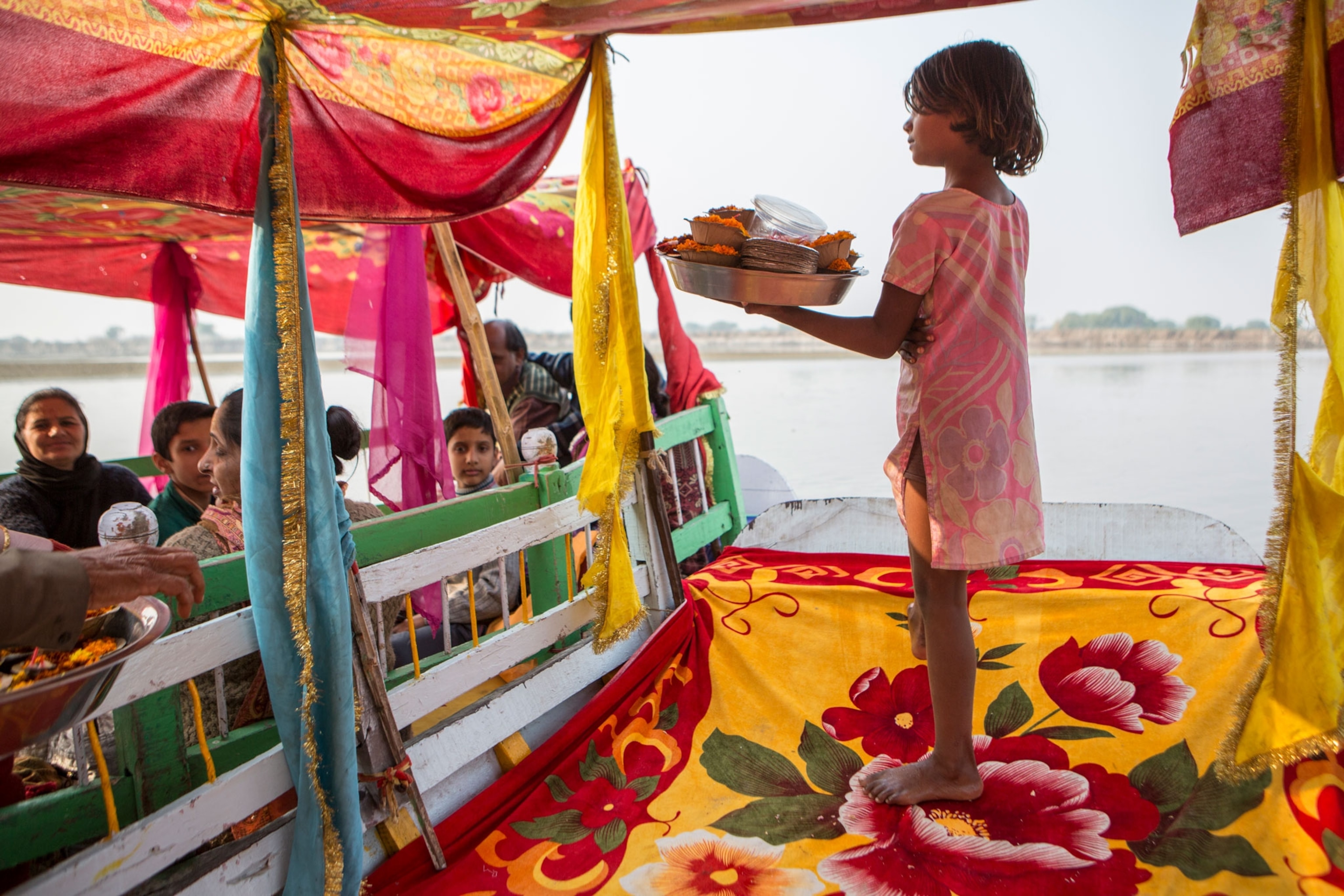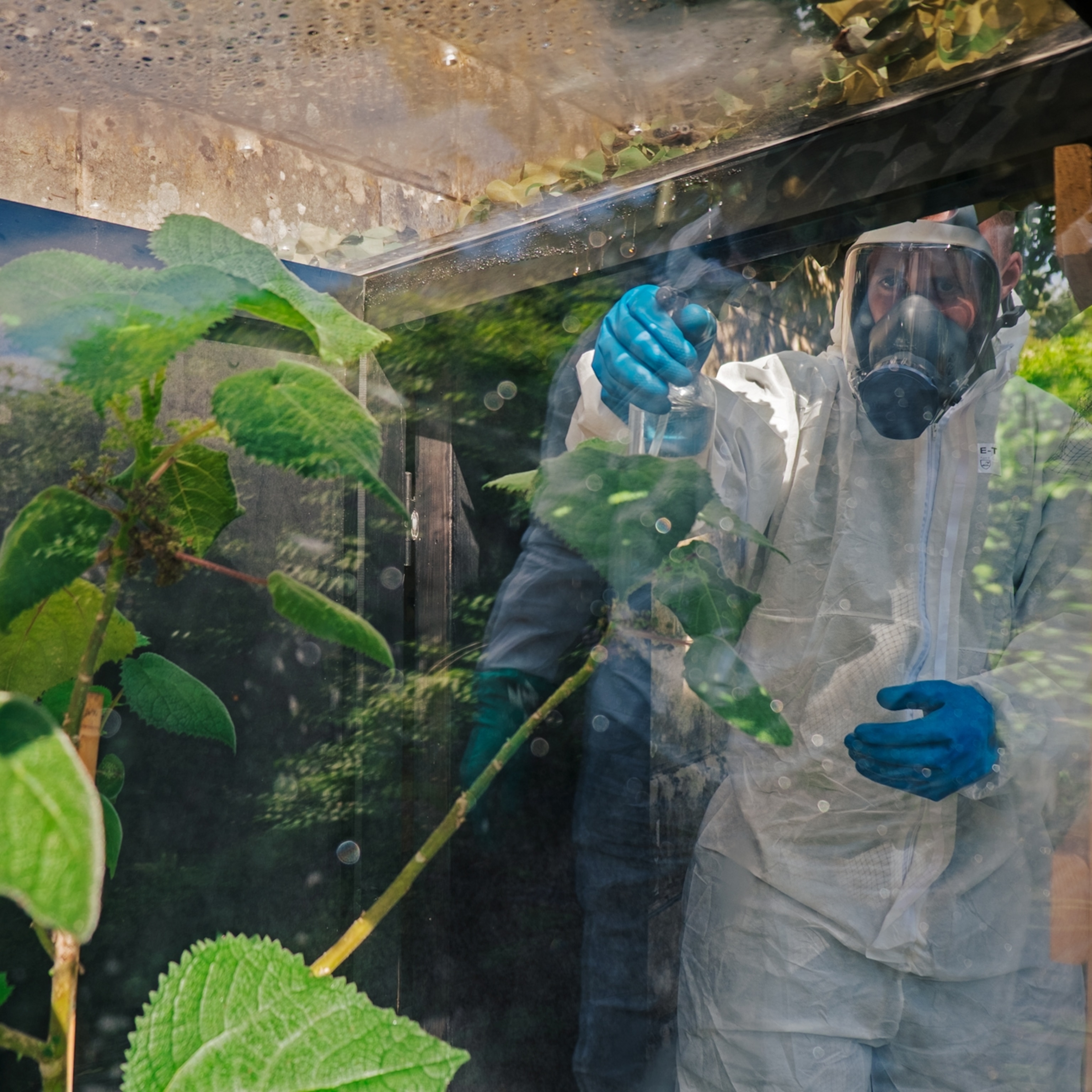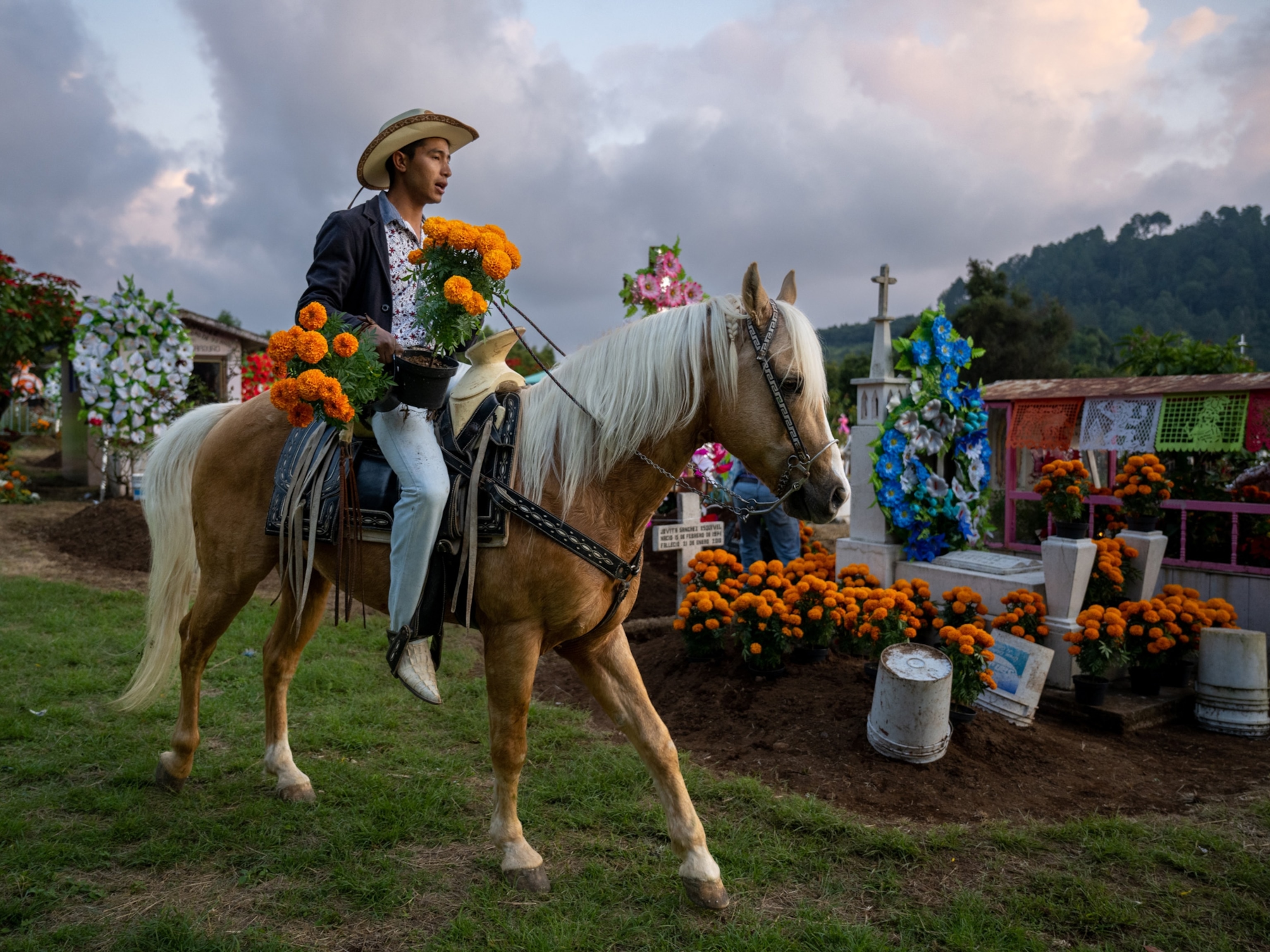How the soulful marigold became an icon, from Mexico to India
See our photographers' best images of the flowers, which abound at events as diverse as Diwali and the Day of the Dead.

It’s the time of year for marigolds. In homes across India and its diaspora, garlands of the fiery orange-and-yellow flowers adorn doorways and holiday tables in honor of Diwali, the five-day festival of lights that takes place each fall.
And as November 1 approaches, bouquets of marigolds also begin to appear in homes throughout Mexico and Central America. Called the flor de muerto, these flowers figure prominently in traditional Day of the Dead celebrations each year—a cheerful flower that reminds observers of the brevity of life while they honor loved ones who have passed.
Native to the Americas, marigolds have played an important ceremonial role in Mexico since pre-Columbian times—beginning with the Nahua, who believed the blooms were a gift from the sun god “so that they might honor their dead.”
But since Spanish and Portuguese traders first transported them to India more than 350 years ago, marigolds have also starred in celebrations across the continent. Beyond Diwali, they’re also ubiquitous at weddings and other religious festivals.
National Geographic photographers have long captured the joy that these two cultures take in marigolds. Take a journey through our archives to discover how this humble flower became an icon.

A woman stands under an umbrella in a cemetery on the Day of the Dead, or Día de Muertos. In the pre-Hispanic era, the Nahua used marigolds—also called cempasúchil, the flower of 400 lives—to honor their dead who they believed could be kept alive in memory and spirit. But the flowers also served medicinal purposes: One 16th-century record indicates that they were used to cure hiccups and treat people who had been struck by lightning.
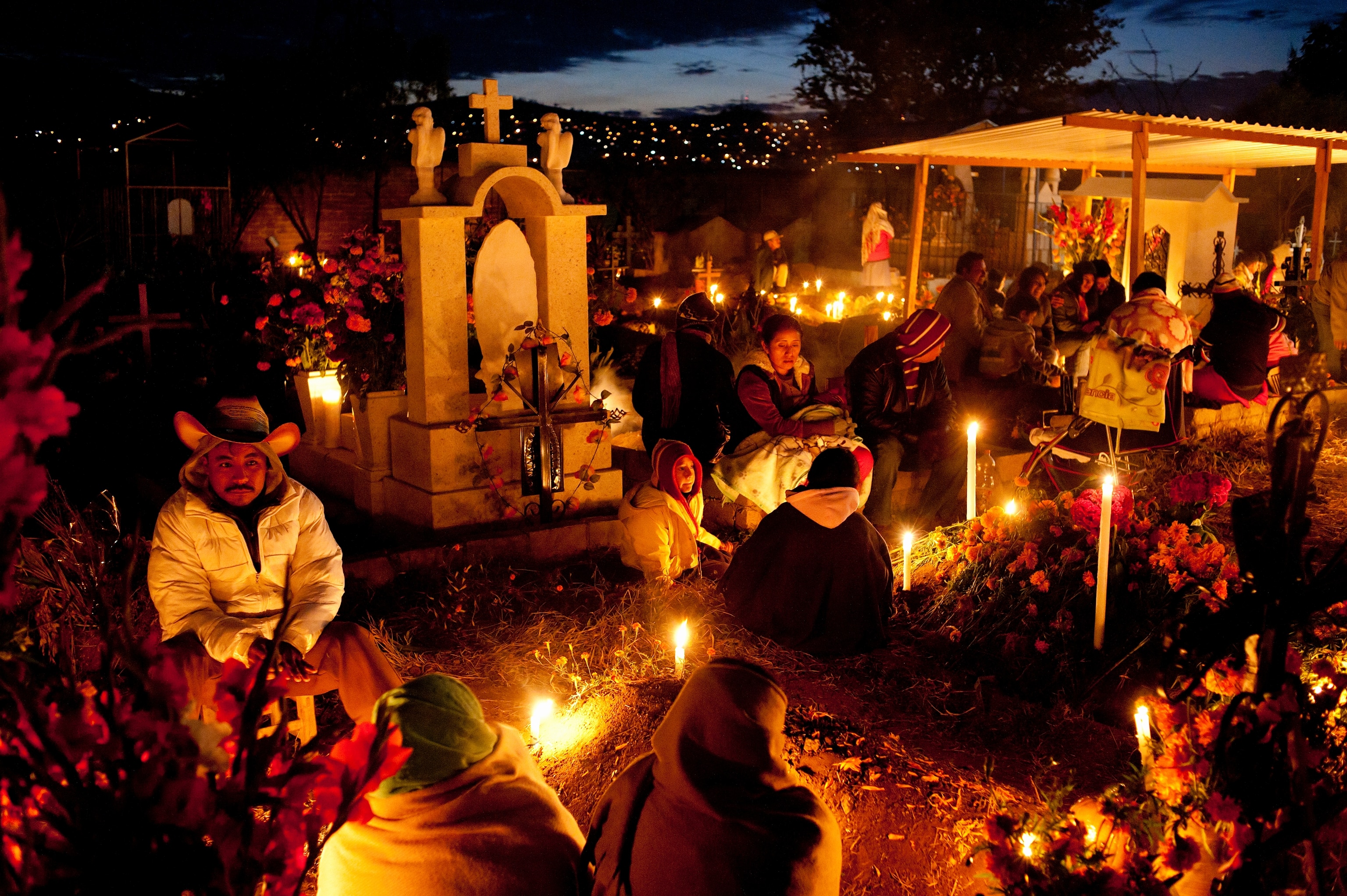
Mourners light candles on graves on the Day of the Dead in Santa María Atzompa, Mexico. It’s believed the souls of the dead return to Earth on this holiday, which takes place each November 1 and 2. Many families decorate the graves of their loved ones with marigolds, whose heady smell and bright colors are believed to attract spirits. Some families even create pathways of marigolds to lead their loved one’s soul home.
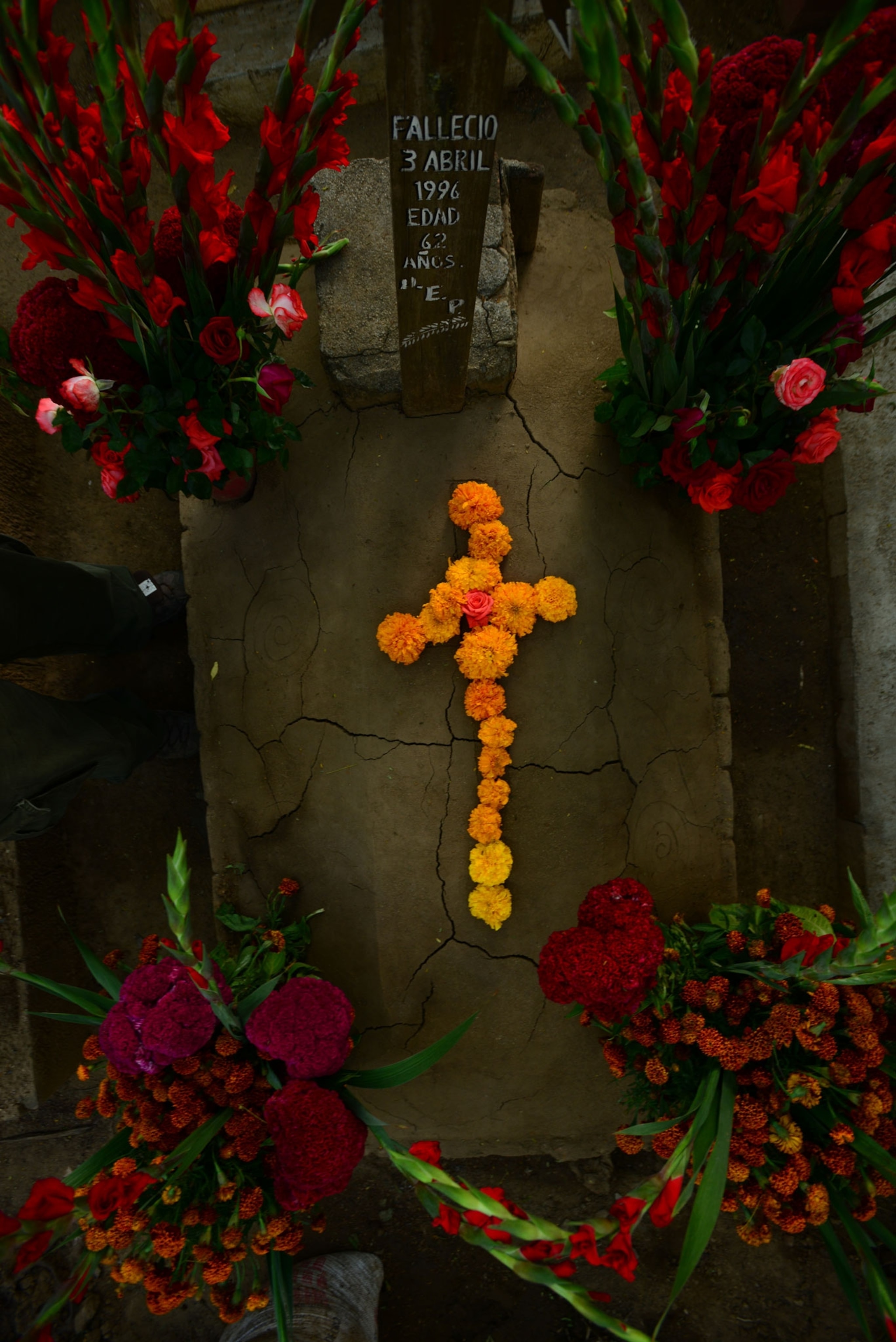
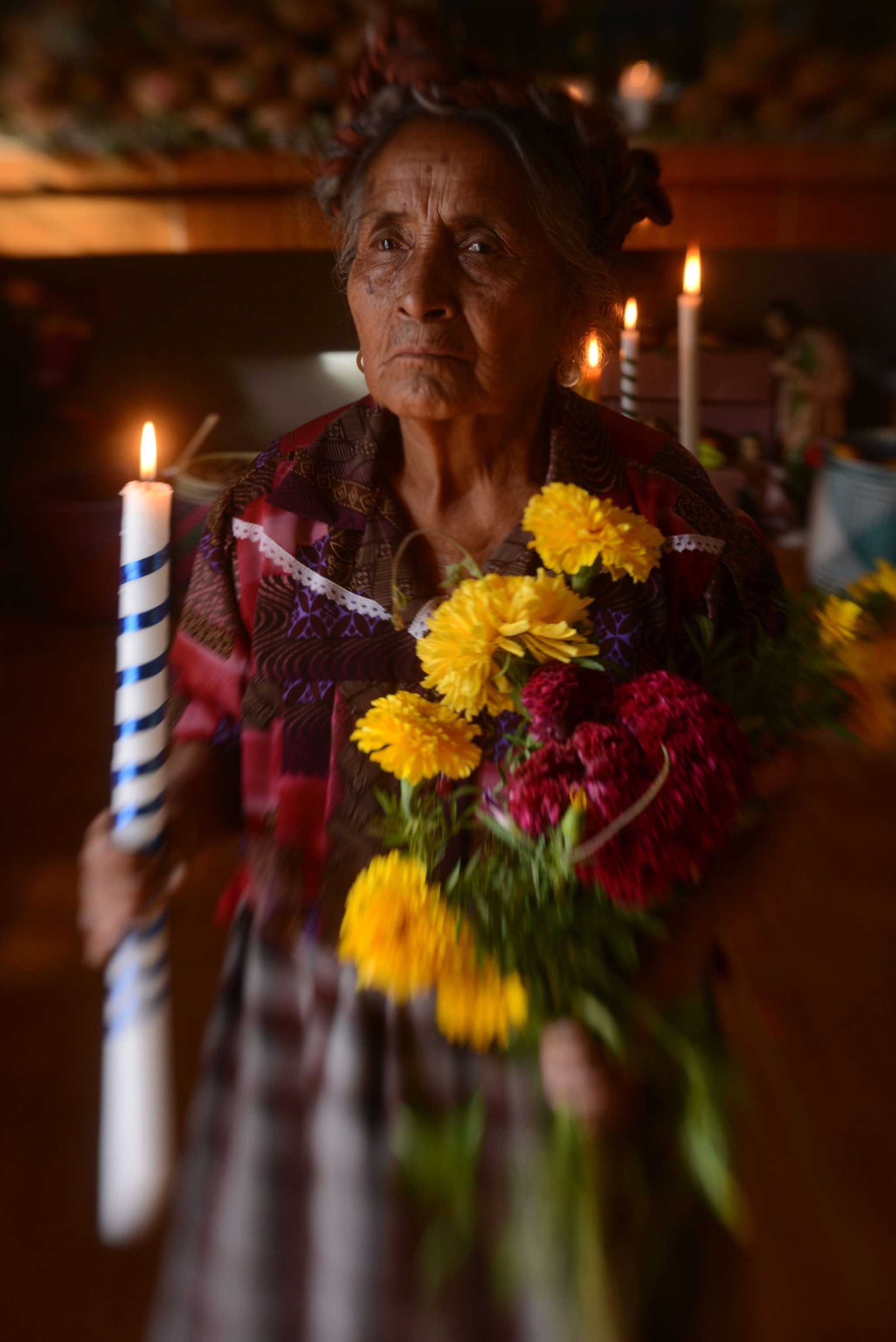
A burial site is adorned with flowers during the Day of the Dead celebration in San Antonino, Mexico. Because marigolds are also believed to have cleansing properties, some families arrange marigolds in the shape of a cross to cleanse the souls of their loved ones.
A Zapotec woman holds vigil at her home during the Day of the Dead. Families also build altars with ofrendas—offerings—to honor loved ones who have died. The altars are often lit with candles and adorned with bouquets of marigolds.
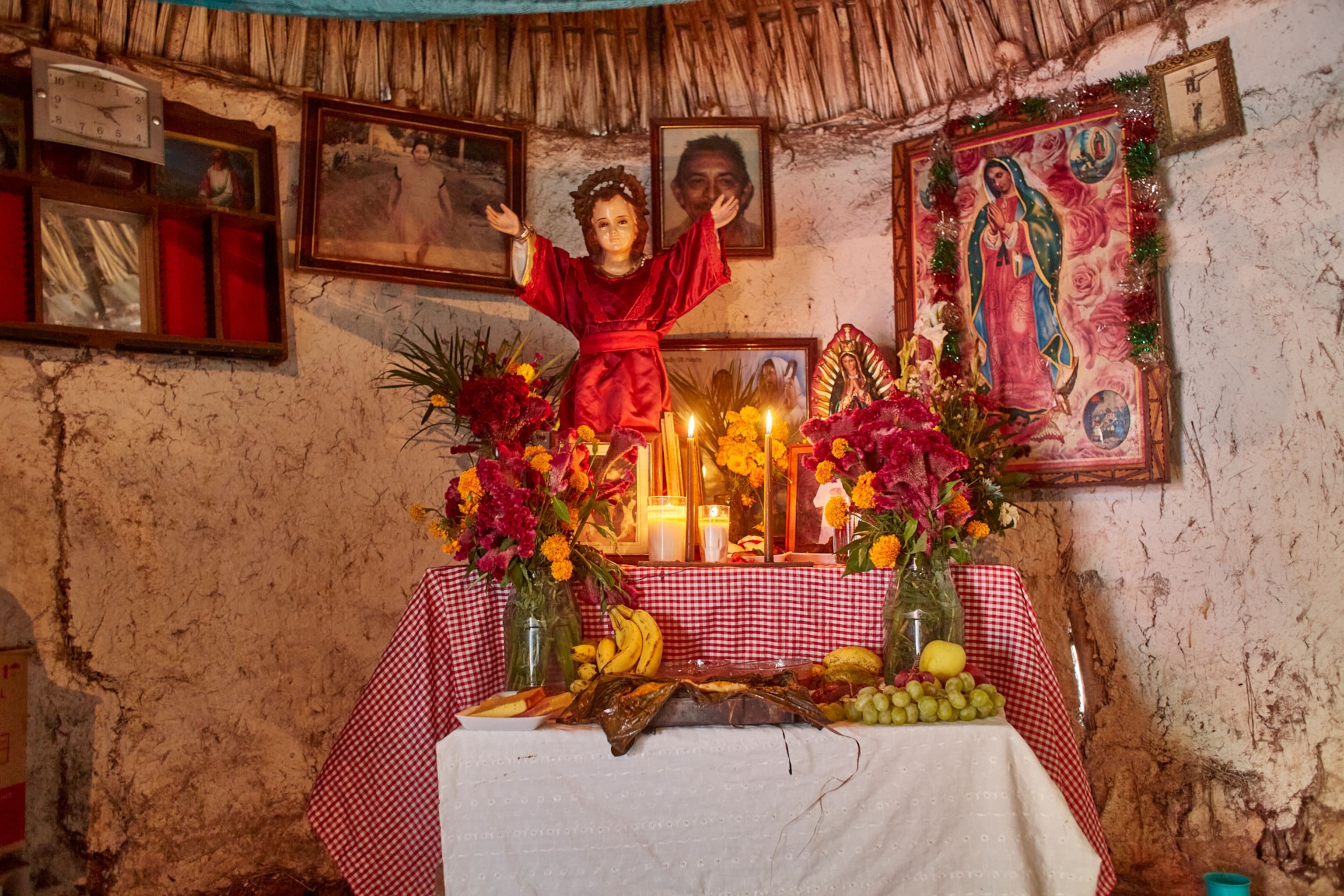
Mayans observe their own version of Day of the Dead, a celebration called Hanal Pixán, meaning “food for the souls.” They, too, create altars in honor of dead loved ones, which are adorned with marigolds, candles, and offerings of fresh fruit to nourish the spirits of the departed.
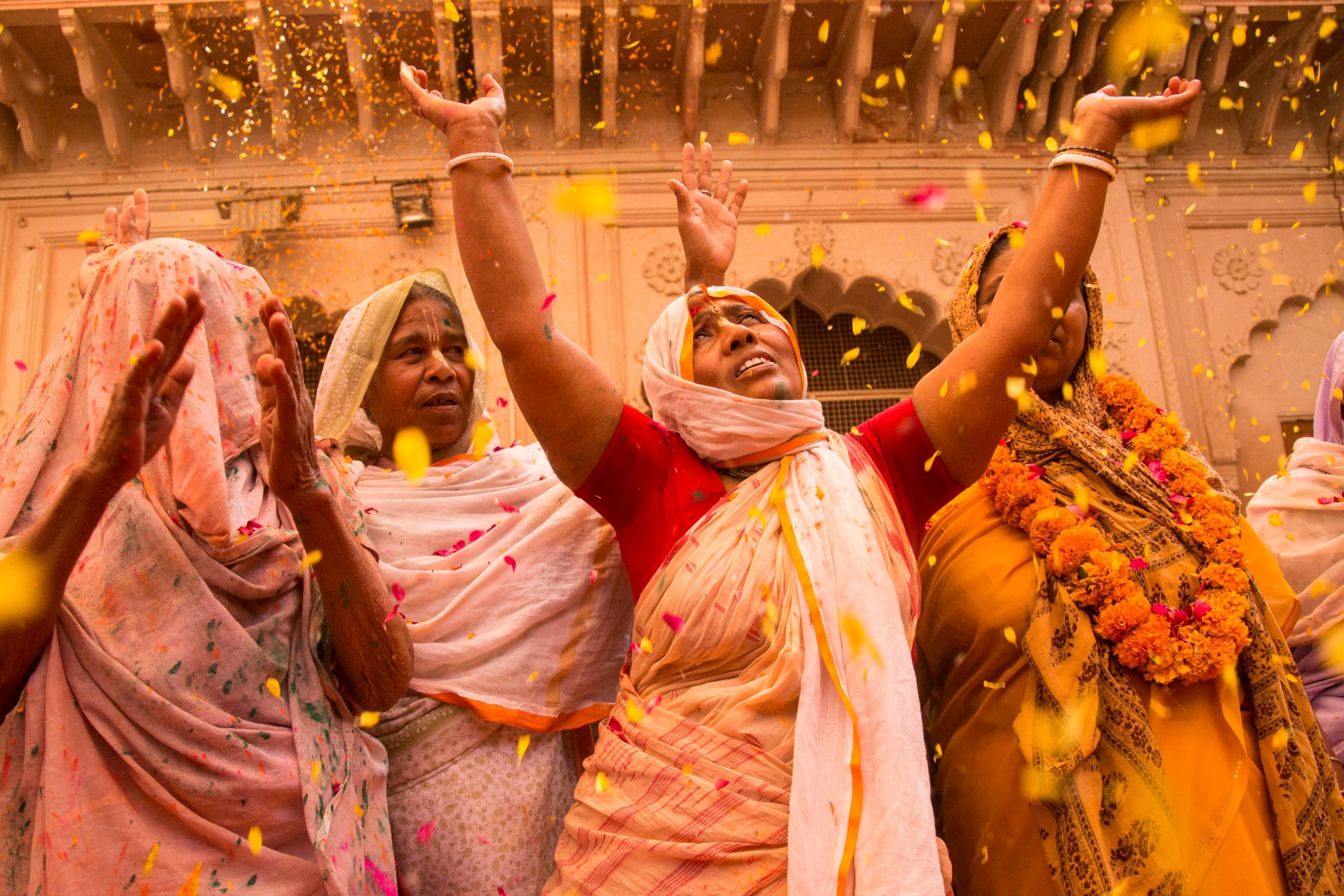
Women celebrate Holi at the Gopinath Temple in India. Flowers have long been featured in Hindu ceremonies as an offering to the gods. They also are used as a symbol of respect and admiration for politicians, married couples, and the dead. “…flowers are the food of the spirit, a sign of respect and love,” anthropologist Jack Goody wrote in his book The Culture of Flowers. Once the marigolds arrived in South Asia, they were quickly adopted for use in festivals like this colorful one.
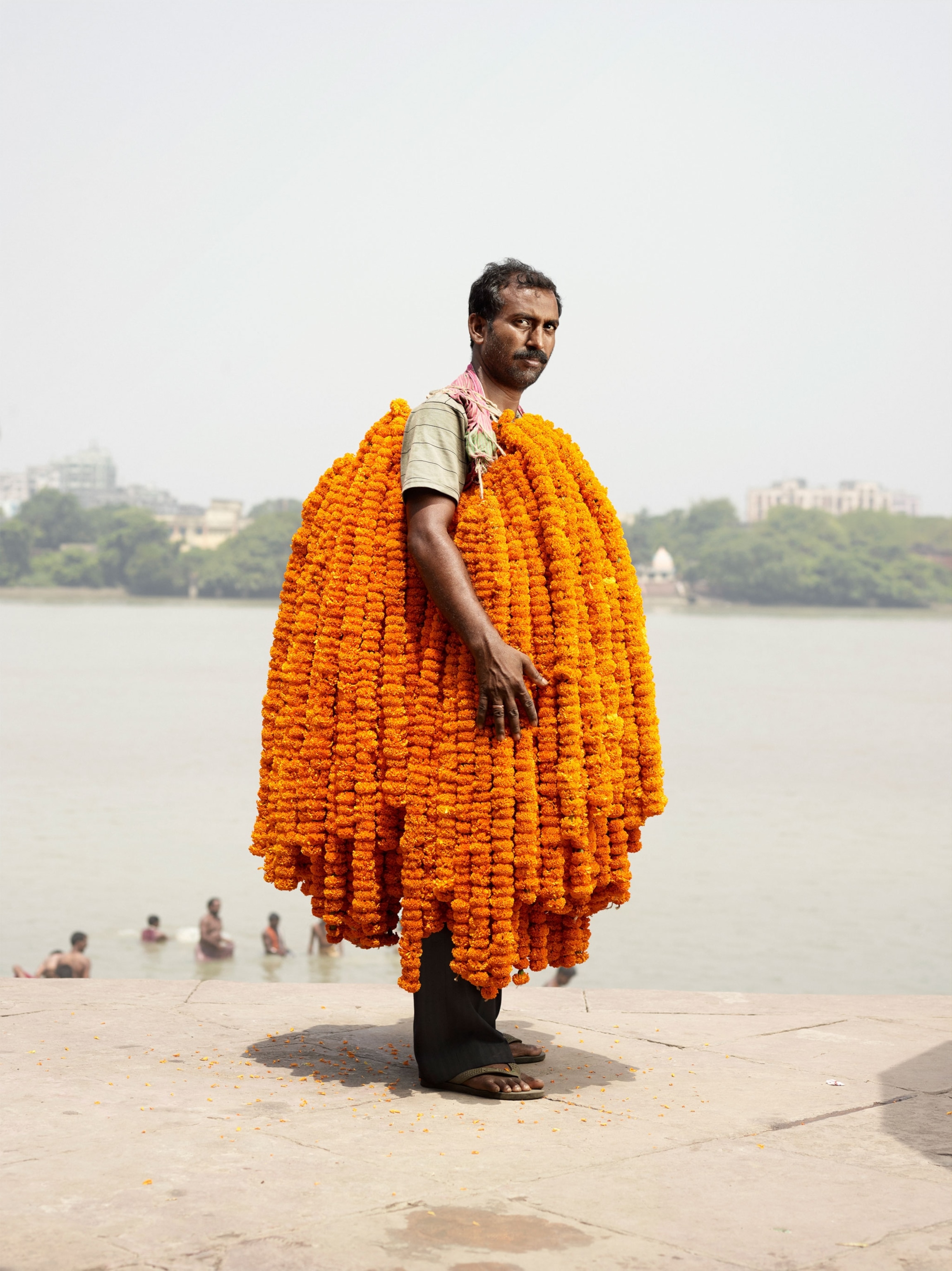

Flower vendors from the Mullick Ghat flower market in Kolkata hold garlands of orange and yellow marigolds. “Today the culture of flowers in India is dominated by the garland that decorates the shoulders of everyone from the politicians to statues, to married couples and the dead,” Goody writes.
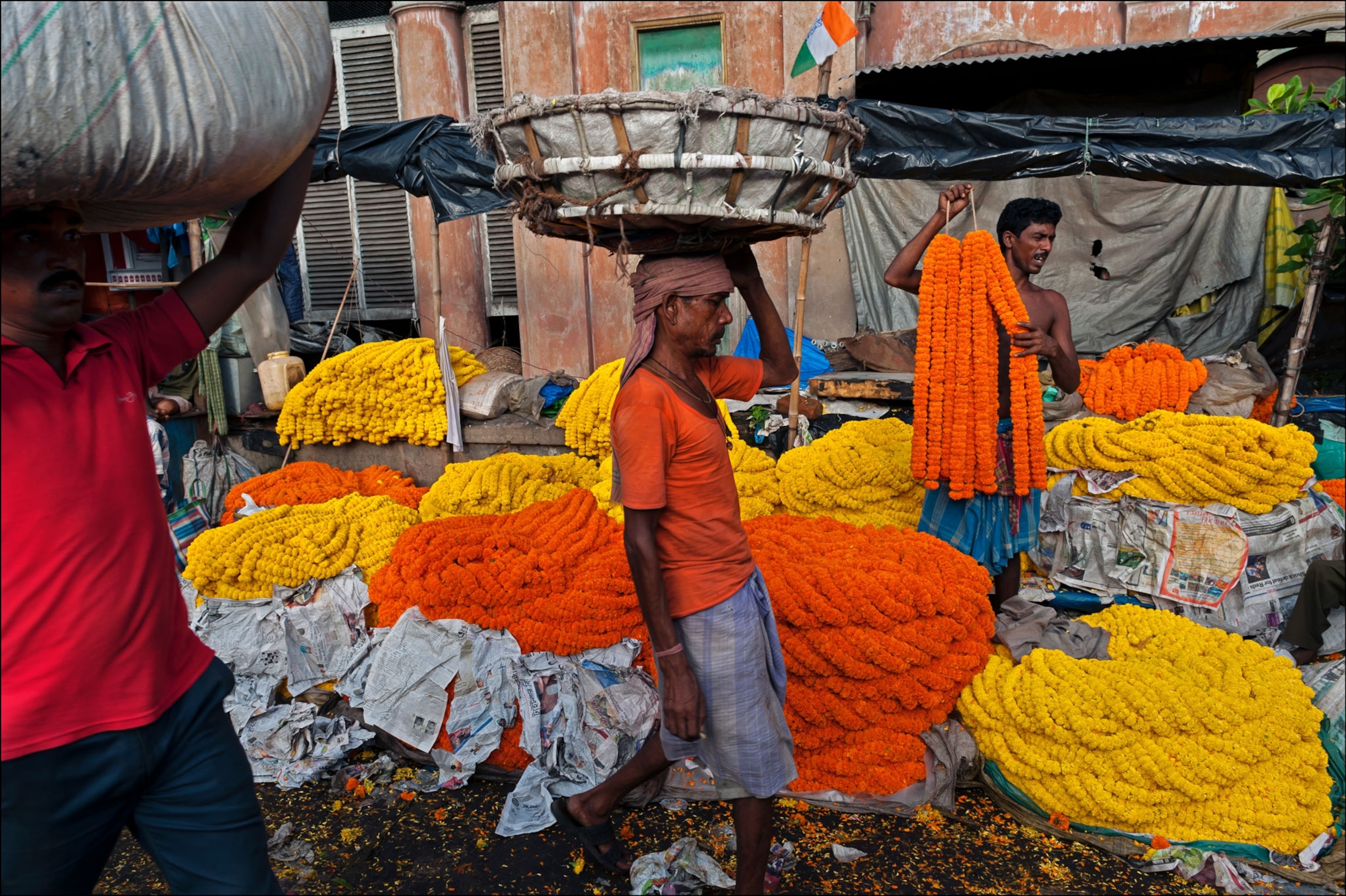
Vendors vie for business at the vast Malik Ghat flower market, where marigold garlands are sold as decorations for weddings, festivals, and religious events. Goody writes that these flowers “are in constant demand” in India—but especially at Diwali, the country’s most important holiday that celebrates the triumph of good over evil.
(For some, Diwali also marks the beginning of a new year—here’s what to know about the holiday.)
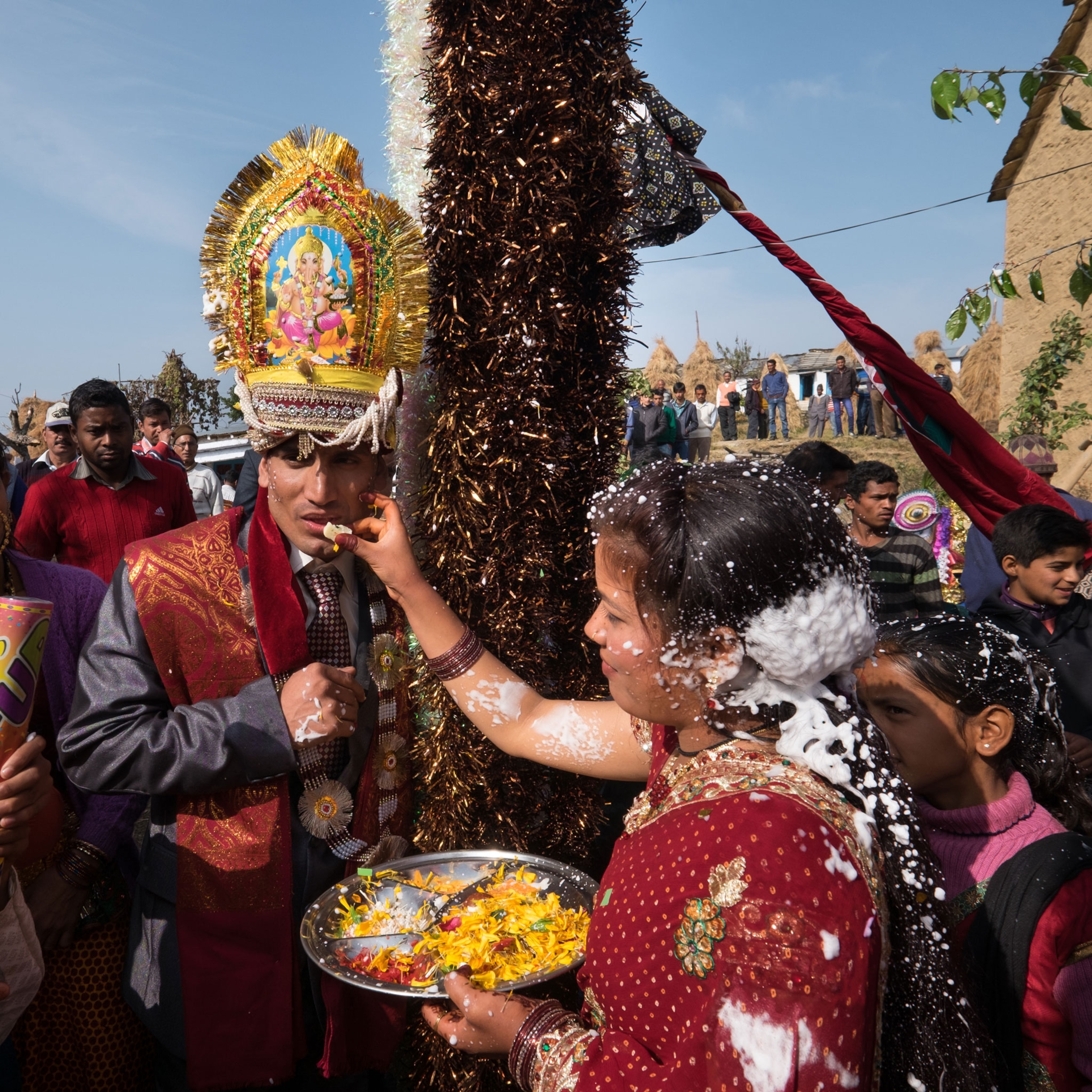
A groom is welcomed at his bride's home during a traditional wedding in the Himalayas. It’s traditional in some communities for the bride’s family to present a silver platter with rice and other auspicious items—in this case, including marigold petals. Marigolds are edible and were even depicted as a snack in the movie Monsoon Wedding.
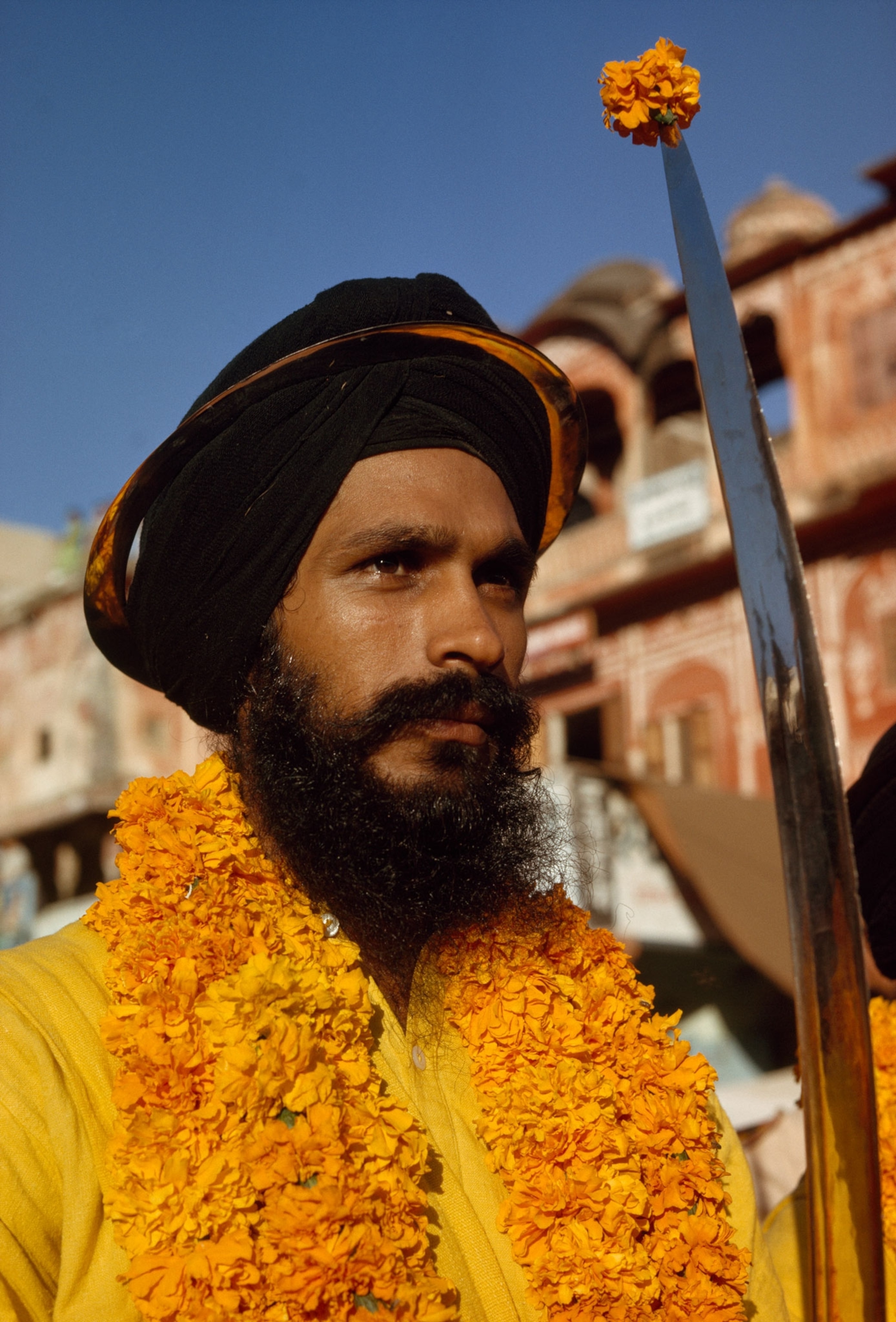
A marigold tips the sword of a garlanded Sikh festivalgoer in Jaipur, originally published in National Geographic’s May 1963 issue dedicated to the culture of the Indian subcontinent. Although often associated with Hindu festivals, marigolds bear special significance for people of many faiths across the Indian subcontinent.
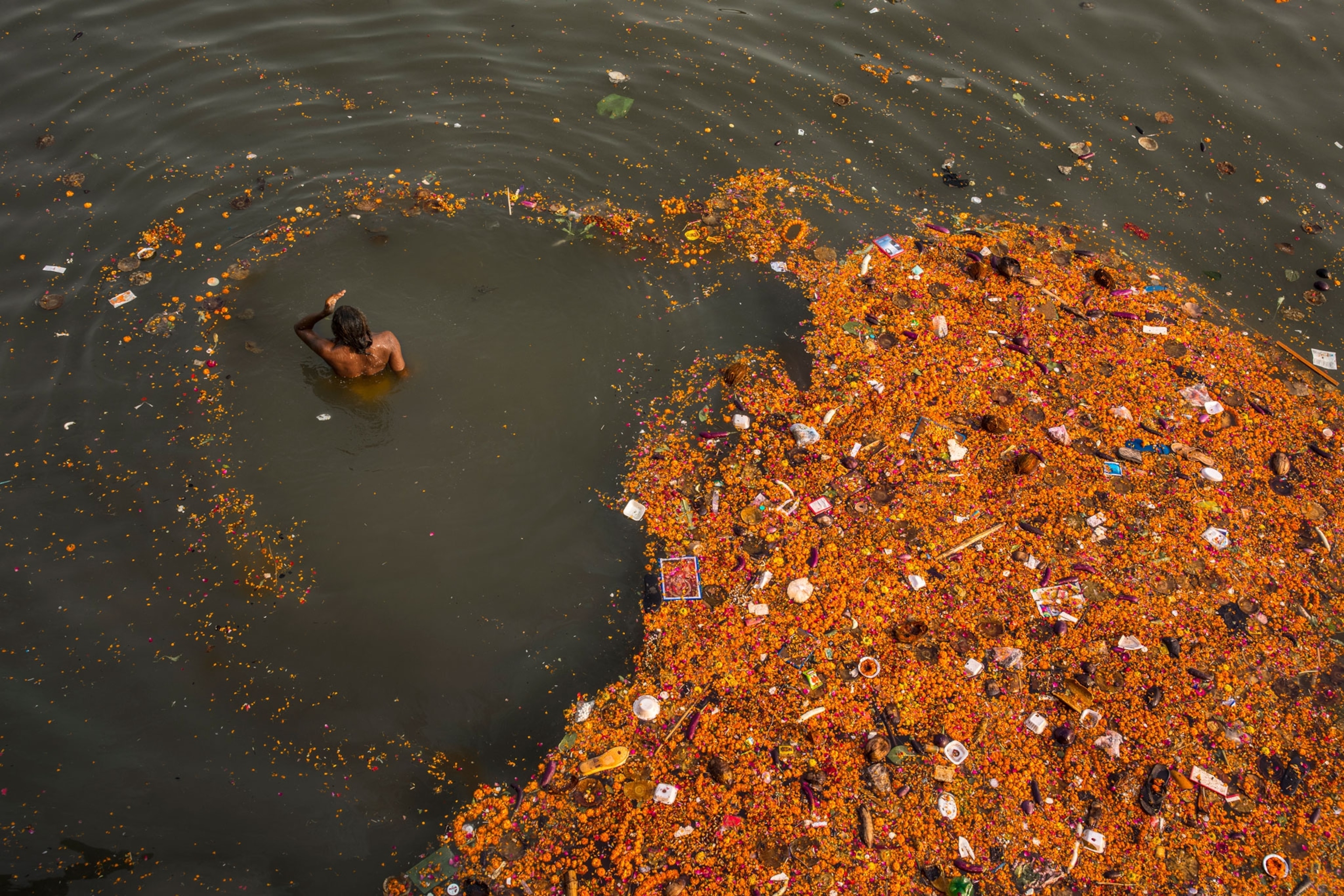
A man dips his body in the Ganges river, which is believed to purify the soul, amid a swirl of marigolds, plastic trash, and waste. Marigolds are also omnipresent in the Hindu festival Ganga Dussehra, which celebrates the day the holy river is thought to have descended from heaven.
Archaeobotanist Jack Harlan marveled at the abundance of marigolds at the 1960 Dussehra festival in northwest India’s Kulu Valley. “Marigolds were everywhere. Garlands were sold on the street, draped from tents, hung over doorways, worn about the neck,” he wrote. “The marigold is a sacred flower in the Kulu valley and varieties of maize and peppers have been bred to match its color.”
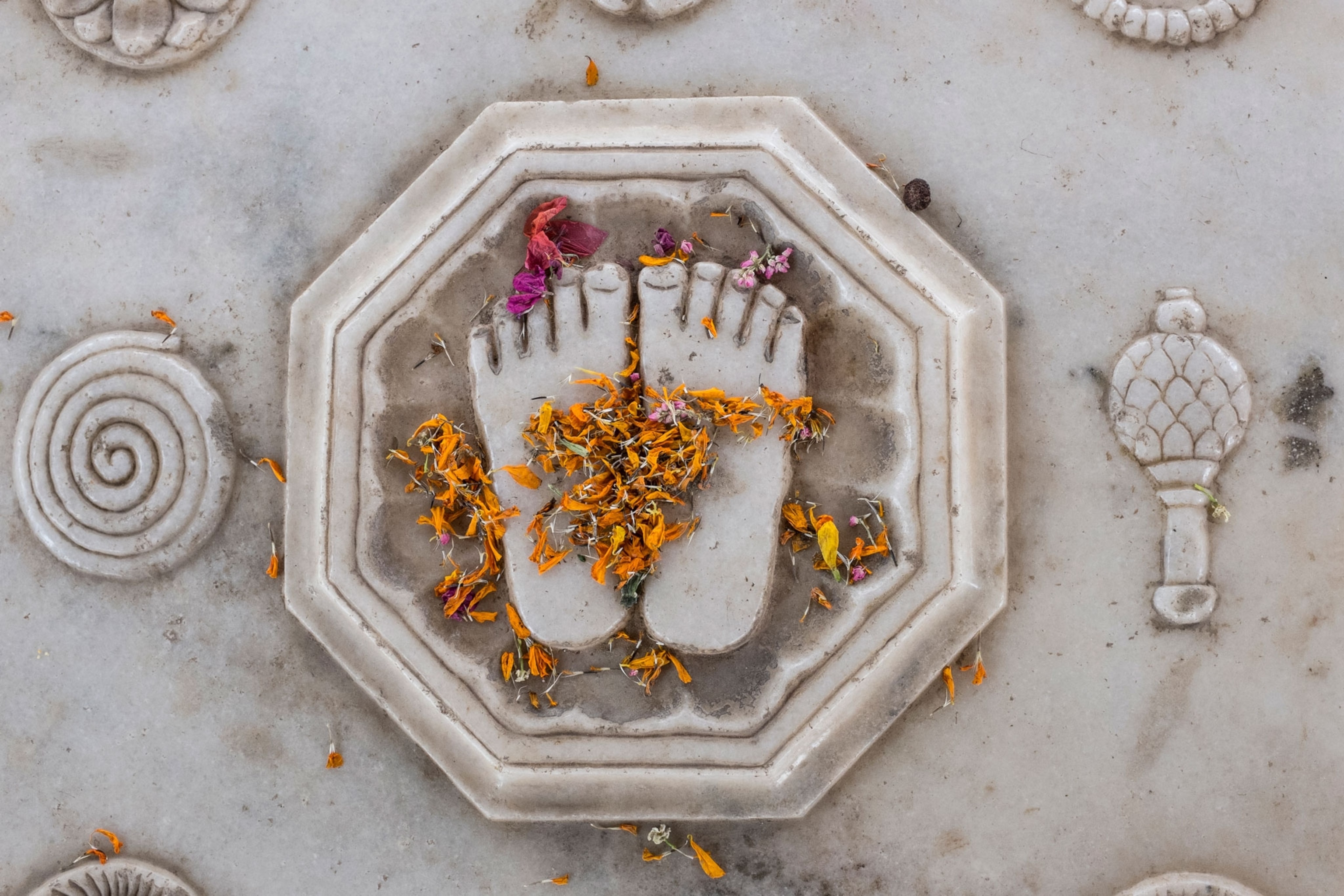
Marigold petals strewn inside the temple at Kusum Sarovar, a sacred water reservoir in Uttar Pradesh. Legend has it that Hindu god Krishna would visit the forest surrounding the reservoir, where he made flower garlands for the goddess Radha.
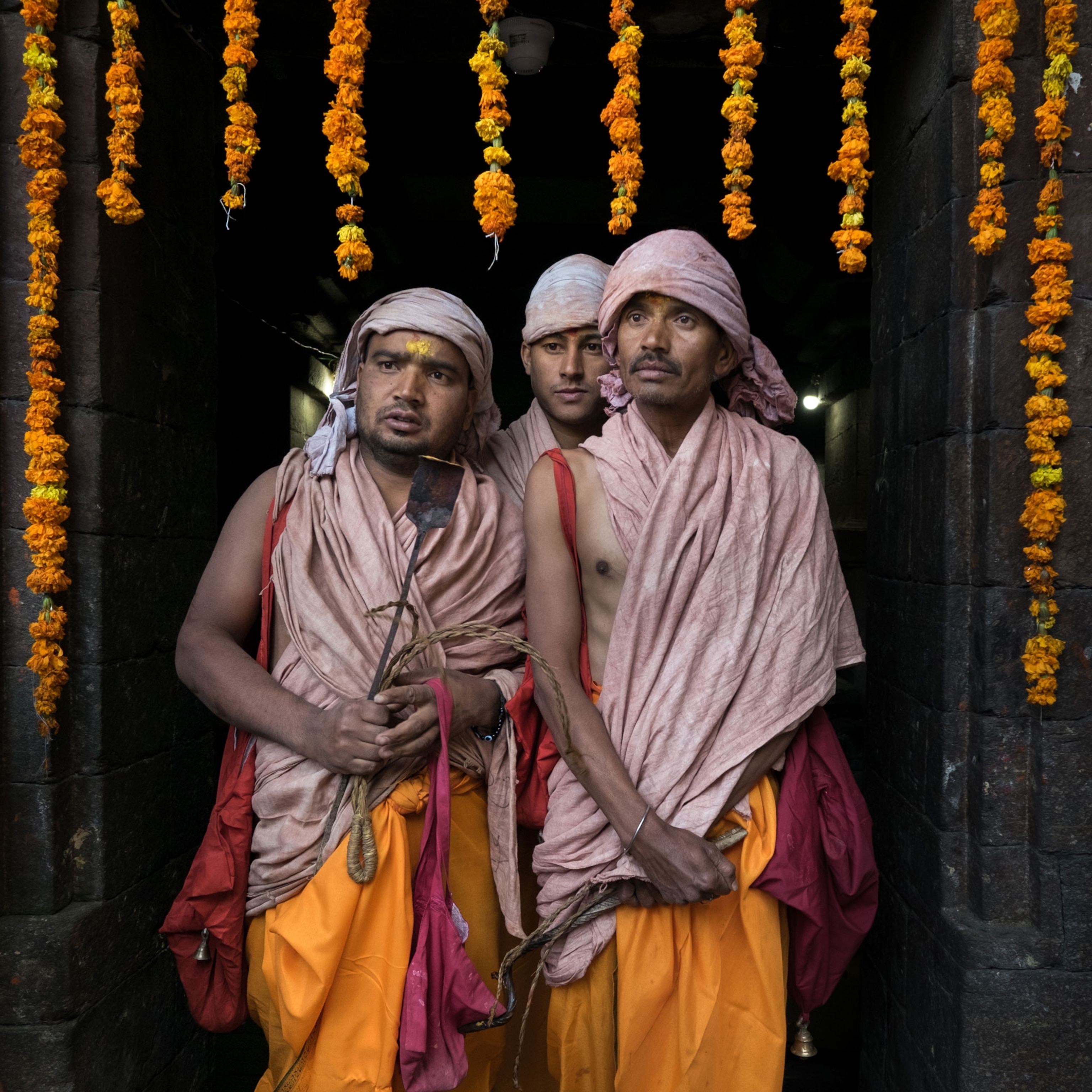
Above: Marigold garlands hang over the heads of Hindu pilgrims at the temple of Jageshwar in the Himalayas. The biggest temple complex in the world, Jageshwar consists of more than 125 big and small temples dedicated to Shiva, a god with the power to destroy and recreate the universe.
Below: A girl sells flowers for prayer offerings to the holy Yamuna River in Vrindavan, Uttar Predesh, India.
